Analysis of Near-Field Characteristics on Improved Structures of Double-Slot Antipodal Vivaldi Antenna
Abstract
:1. Introduction
- Characterization of near-field propagation using impulse response analysis. New characteristics are proposed, including the first-cluster magnitude and ToA of the Poynting vector, and the flatness of the wavefronts.
- Proposal of the partitional near-field to far-field transformation in time and frequency domains. The transformation is applied to sub-structures of the geometry to analyze the impact of individual sub-structures and local near-field propagation features on the overall performance of the entire geometry.
- Application of all these proposed characteristics and the conventional characteristics to the design of three improved versions of double-slot Vivaldis, including Vivaldi with strip line offset, Vivaldi with adjusted core length and Vivaldi with lateral comb slots. Diversity, complementarity and granularity in the analyzability of the characteristics emphasize the intrinsic nature of the near-field propagation process and reduce false possibilities in the analysis. These contribute to enhance the insight of near-field propagation processes on this kind of traveling wave antenna.
2. Near-Field Propagation Characteristics vs. Conventional Overall Characteristics
2.1. Electromagnetic Intensity and Energy Flow Distribution
2.2. Time of Arrivals
2.3. Structural Partition for Near-Field to Far-Field Transformation
2.4. Conventional Overall Characteristics
3. Analysis of Near-Field Characteristics on Structure With Strip Line Offset
3.1. Near-Field Intensity and Wavefront Analysis
3.2. Near-Field Effects to Far-Field Analysis
4. Analysis of Core Length Effects to Near-Field Characteristics
4.1. Near-Field Wavefront Analysis
4.2. Partitional Near-Field Effects to Far-Field Analysis
5. Analysis of Near-Field Characteristics on Structure With Lateral Comb Slots
5.1. Near-Field Wavefront Analysis
5.2. Partitional Near-Field Effects to Far-Field Analysis
6. Conclusions
Author Contributions
Funding
Data Availability Statement
Conflicts of Interest
References
- Gibson, P.J. The Vivaldi Aerial. In Proceedings of the 1979 9th European Microwave Conference, Brighton, UK, 17–20 September 1979; pp. 101–105. [Google Scholar]
- Gazit, E. Improved design of the Vivaldi antenna. IEE Proc. H Microwaves Antennas Propag. 1988, 135, 89–92. [Google Scholar] [CrossRef]
- Nurhayati, N.; Setijadi, E.; de Oliveira, A.M.; Kurniawan, D.; Yasin, M.N.M. Design of 1 × 2 MIMO Palm Tree Coplanar Vivaldi Antenna in the E-Plane with Different Patch Structure. Electronics 2023, 12, 177. [Google Scholar] [CrossRef]
- Dixit, A.S.; Kumar, S. A Survey of Performance Enhancement Techniques of Antipodal Vivaldi Antenna. IEEE Access 2020, 8, 45774–45796. [Google Scholar] [CrossRef]
- Liu, Y.; Zhou, W.; Yang, S.; Li, W.; Li, P.; Yang, S. A novel miniaturized Vivaldi antenna using tapered slot edge with resonant cavity structure for ultrawideband applications. IEEE Antennas Wirel. Propag. Lett. 2016, 15, 1881–1884. [Google Scholar] [CrossRef]
- Hossain, A.; Pham, A.-V. A novel Gain-Enhanced miniaturized and lightweight Vivaldi antenna. IEEE Trans. Antennas Propag. 2023, 71, 9431–9439. [Google Scholar] [CrossRef]
- Fei, P.; Jiao, Y.-C.; Hu, W.; Zhang, F.-S. A Miniaturized Antipodal Vivaldi Antenna with Improved Radiation Characteristics. IEEE Antennas Wirel. Propag. Lett. 2011, 10, 127–130. [Google Scholar]
- Ding, M.; Wang, X.; Wang, Y.; Hu, Z.; Liu, G.; Liu, Z.; Wang, B. A High Gain Vivaldi Antenna with Multiple Near-Field Dielectric Lenses and Grooved Edges. Int. J. RF Microw. Comput. Eng. 2023, 2023, 1–11. [Google Scholar] [CrossRef]
- Samsuzzaman, M.; Islam, M.T.; Islam, M.T.; Shovon, A.A.; Faruque, R.I.; Misran, N. A 16-modified antipodal Vivaldi antenna array for microwave-based breast tumor imaging applications. Microw. Opt. Technol. Lett. 2019, 61, 2110–2118. [Google Scholar] [CrossRef]
- Faeghi, P.; Ghobadi, C.; Nourinia, J.; Virdee, B. Nanoparticle-coated Vivaldi antenna array for gain enhancement. Appl. Physics. A Mater. Sci. Process. 2023, 129, 3. [Google Scholar] [CrossRef]
- Portosi, V.; Loconsole, A.M.; Campana, A.; Anelli, F.; Prudenzano, F. A novel L-Shaped Metalens for Ultra-Wide Band (UWB) antenna gain improvement. Appl. Sci. 2023, 13, 4802. [Google Scholar] [CrossRef]
- Wang, Y.-W.; Wang, G.-M.; Zong, B.-F. Directivity Improvement of Vivaldi Antenna Using Double-Slot Structure. IEEE Antennas Wirel. Propag. Lett. 2013, 12, 1380–1383. [Google Scholar] [CrossRef]
- Hoang, M.; Yang, K.; John, M.; McEvoy, P.; Ammann, M. Ka-band Vivaldi Antenna with Novel Core Element for High-Gain. In Proceedings of the Loughborough Antennas & Propagation Conference (LAPC 2017), Loughborough, UK, 13–14 November 2017. [Google Scholar]
- Hoang, M.; Yang, K.; John, M.; McEvoy, P.; Ammann, M.J. Ka-band Planar Vivaldi antenna with a core for high gain. IET Microw. Antennas Propag. 2019, 13, 732–735. [Google Scholar] [CrossRef]
- Yang, G.; Ye, S.; Zhang, F.; Ji, Y.; Zhang, X.; Fang, G. Dual-Polarized Dual-Loop Double-Slot antipodal tapered slot antenna for Ultra-Wideband radar applications. Electronics 2021, 10, 1377. [Google Scholar] [CrossRef]
- Hoang, H.; John, M.; McEvoy, P.; Ammann, M.J. Near-Field Propagation Analysis for Vivaldi Antenna Design: Insight into the propagation process for optimizing the directivity, integrity of signal transmission, and efficiency. IEEE Antennas Propag. Mag. 2021, 63, 46–60. [Google Scholar] [CrossRef]
- Hoang, H. Near-Field Propagation Analysis for Traveling-Wave Antennas. Antenna Syst. 2022, 217. [Google Scholar]
- CST Studio Suite. Available online: https://www.3ds.com/products-services/simulia/products/cst-studio-suite/ (accessed on 1 January 2024).
- Balanis, C.A. Advanced Engineering Electromagnetics, 2nd ed.; Wiley Global Education: Hoboken, NJ, USA, 2012. [Google Scholar]
- Balanis, C.A. Antenna Theory: Analysis and Design, 4th ed.; John Wiley & Sons: Hoboken, NJ, USA, 2016. [Google Scholar]
- Bui, M.-T.; Nguyen, M.-H.; Le-Nguyen, T.-T.; Pham-Xuan, V.; Hoang, H. Analysis of Improved Structures Impact on Features of Antipodal Vivaldi Antenna. In Proceedings of the 2023 International Conference on Advanced Technologies for Communications (ATC23), Da Nang, Vietnam, 19–21 October 2023; pp. 254–258. [Google Scholar]

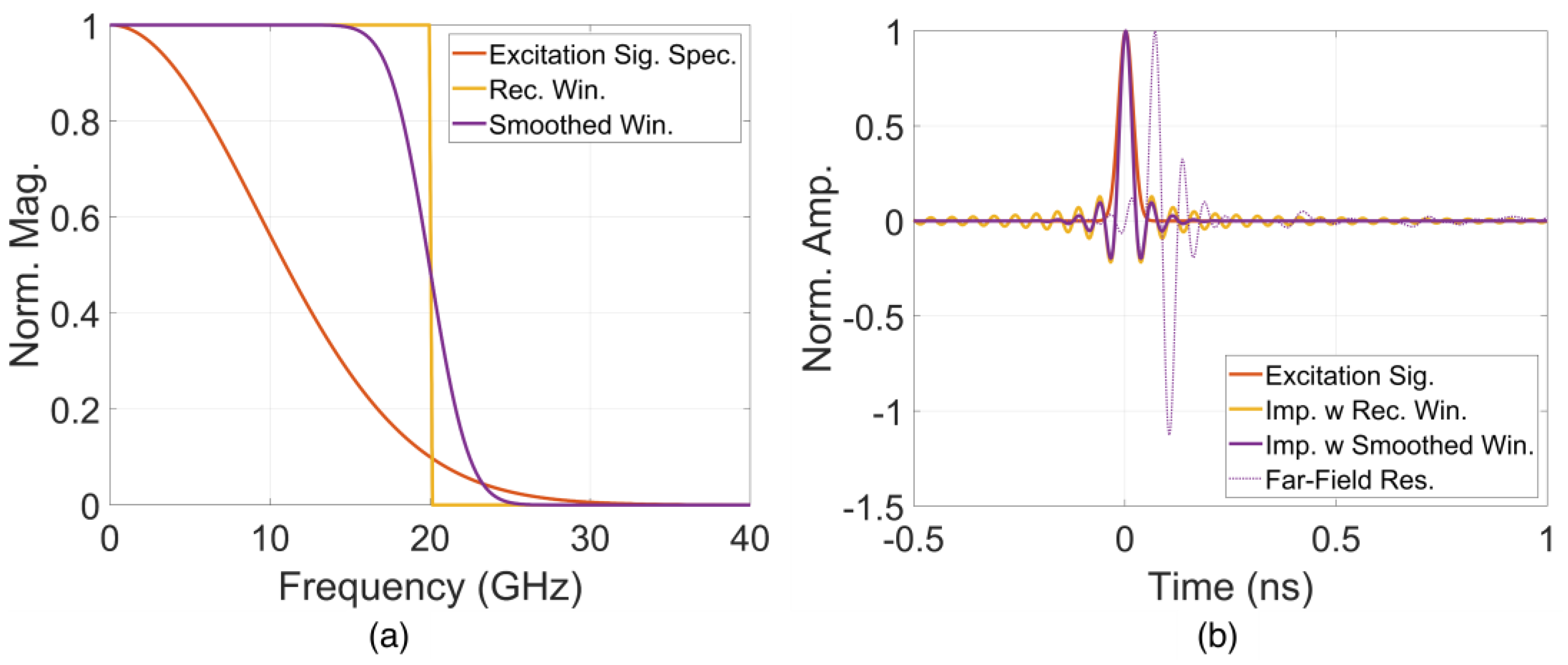



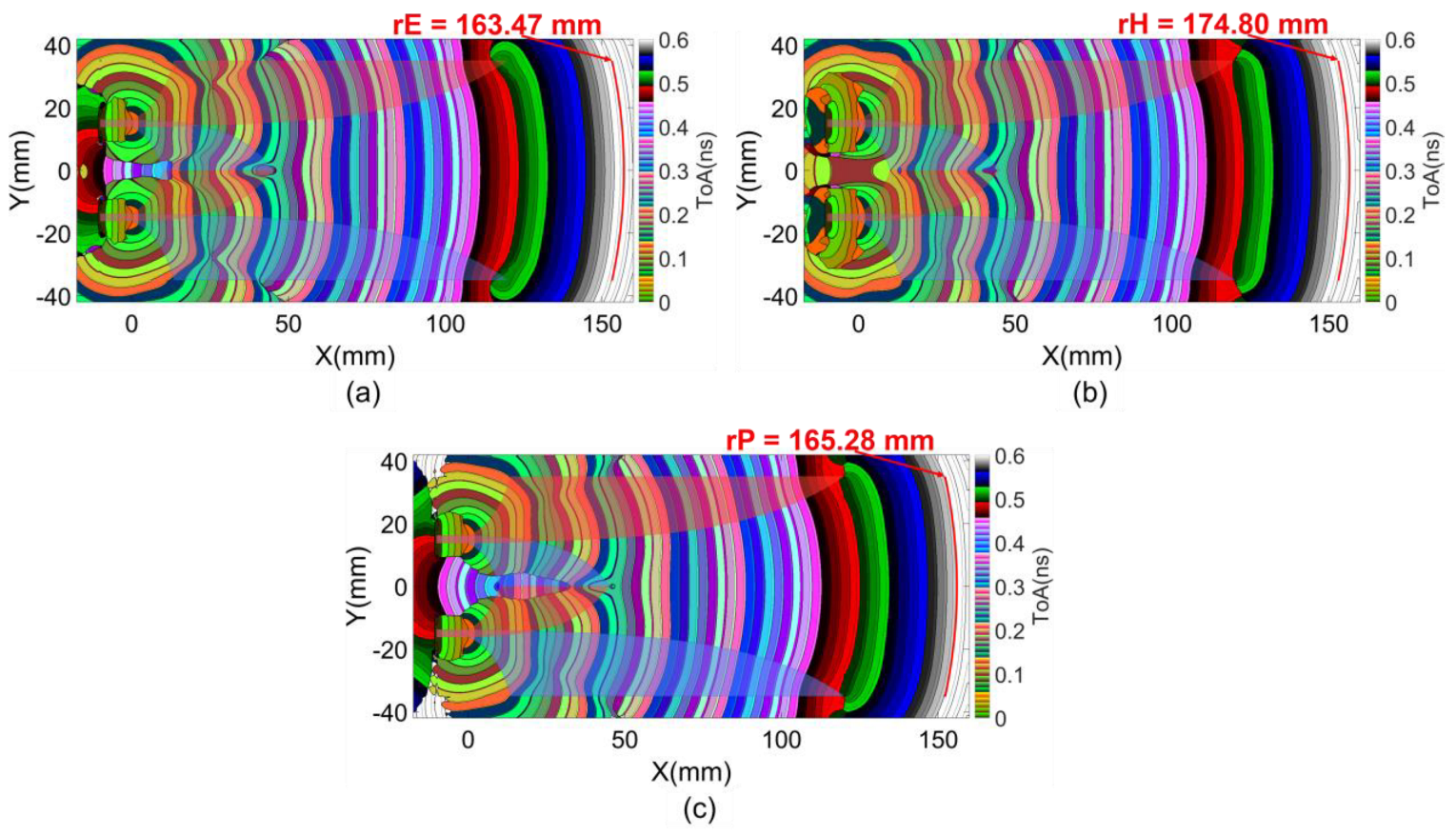
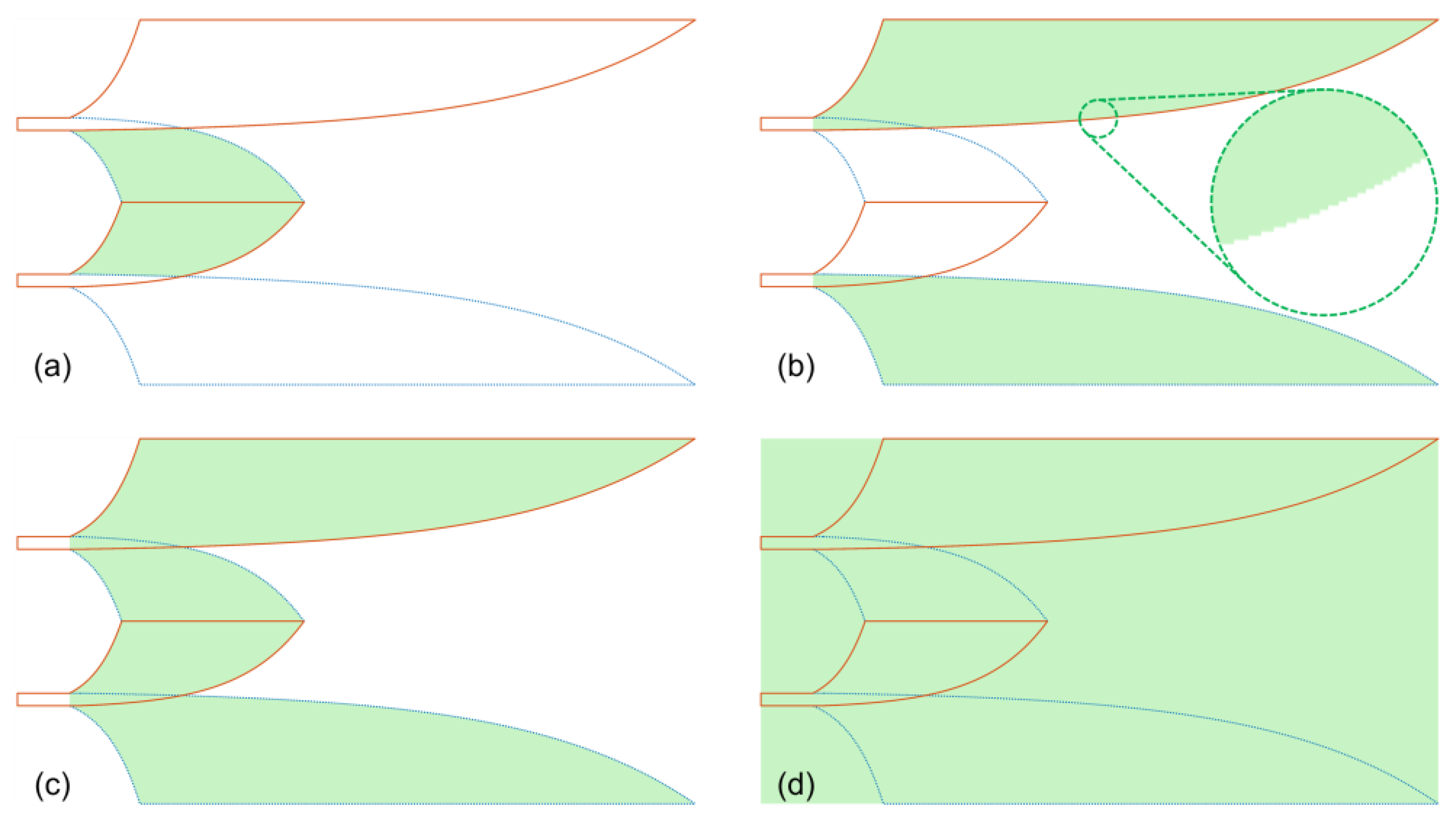




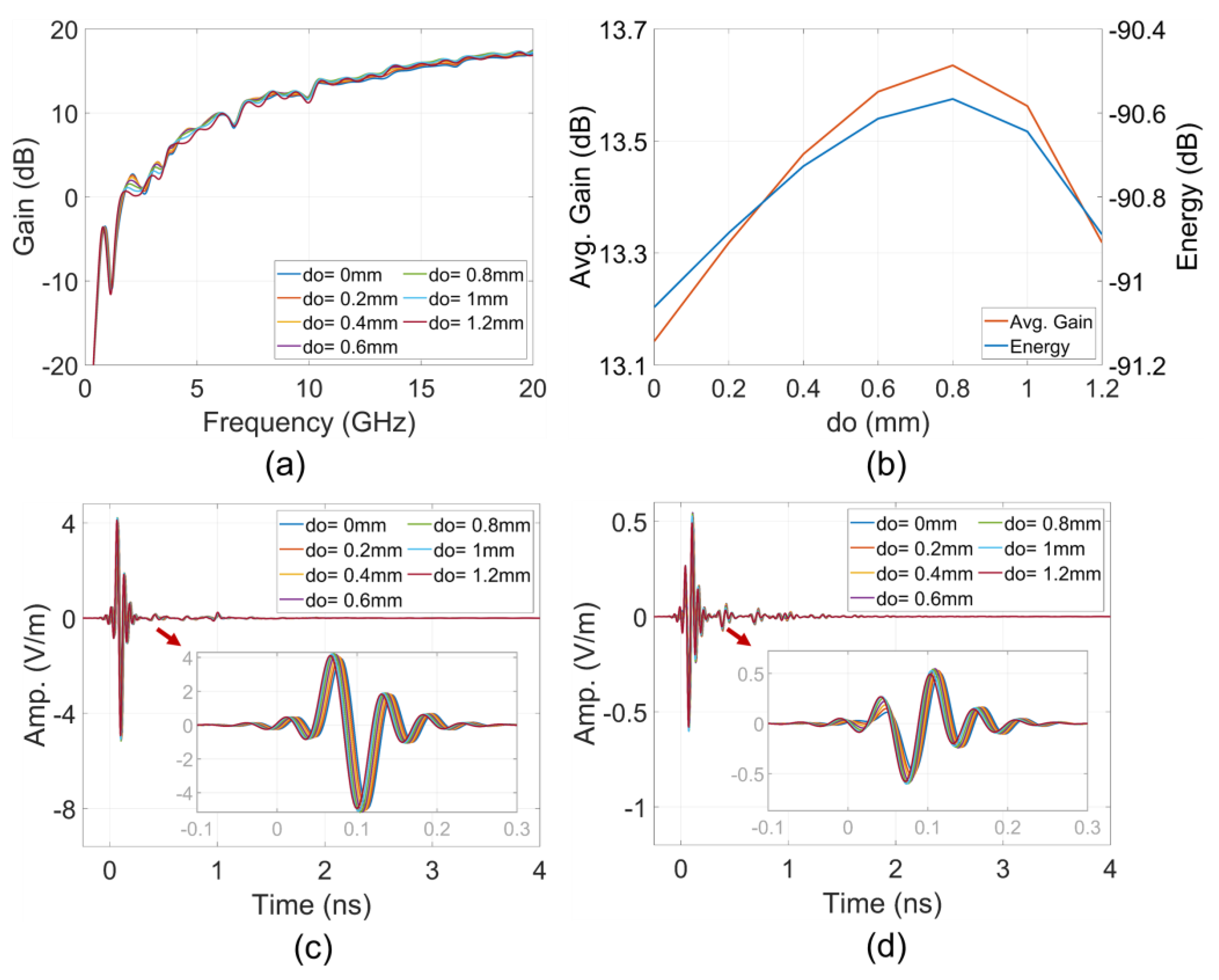





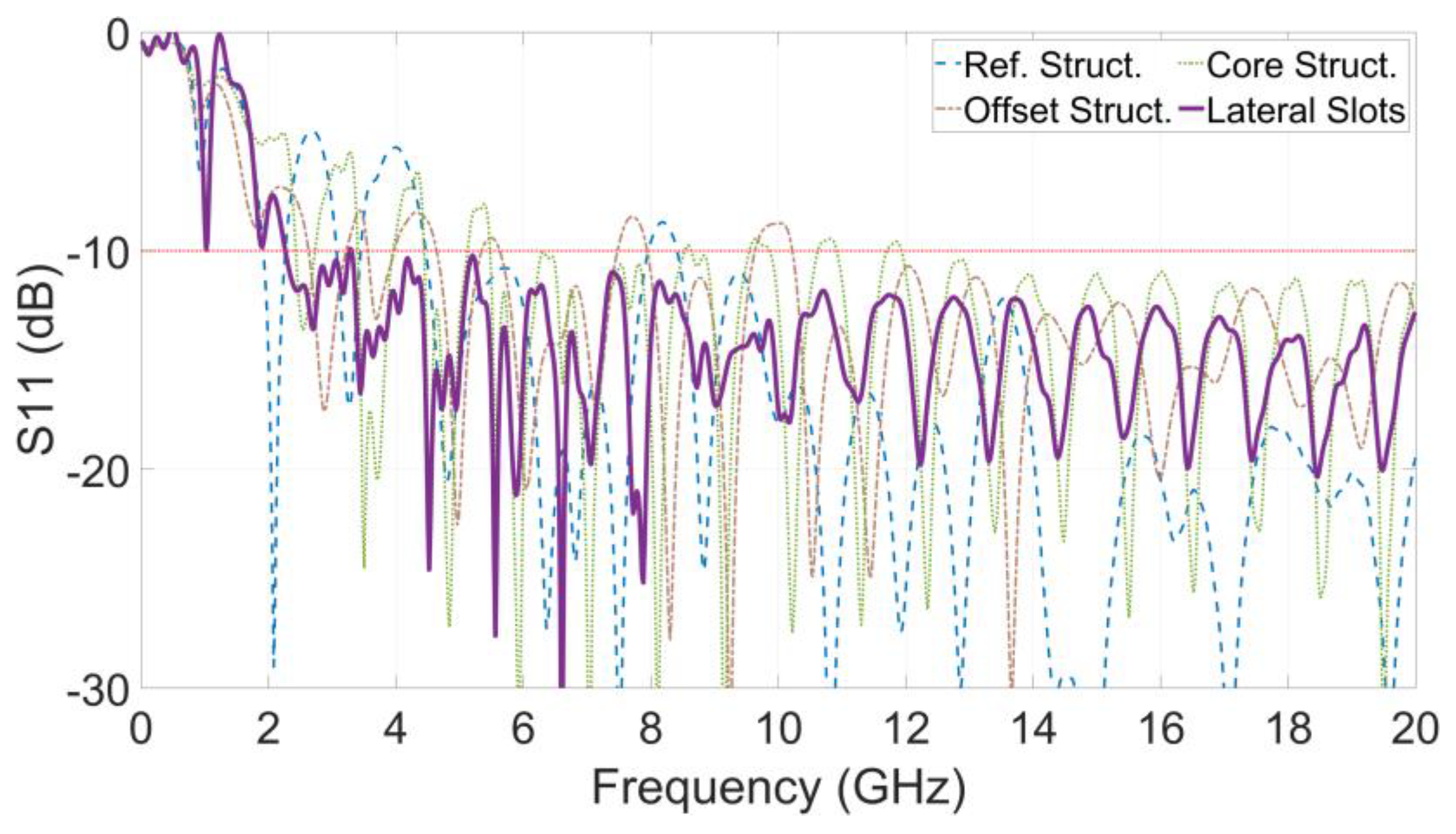
| Core Length (mm) | Radius of Wavefront (mm) |
|---|---|
| 40 | 170.05 |
| 45 | 170.34 |
| 60 | 173.91 |
| 80 | 202.96 |
| 100 | 245.23 |
| 120 | 368.76 |
Disclaimer/Publisher’s Note: The statements, opinions and data contained in all publications are solely those of the individual author(s) and contributor(s) and not of MDPI and/or the editor(s). MDPI and/or the editor(s) disclaim responsibility for any injury to people or property resulting from any ideas, methods, instructions or products referred to in the content. |
© 2024 by the authors. Licensee MDPI, Basel, Switzerland. This article is an open access article distributed under the terms and conditions of the Creative Commons Attribution (CC BY) license (https://creativecommons.org/licenses/by/4.0/).
Share and Cite
Hoang, H.; Nguyen, M.-H.; Pham-Xuan, V. Analysis of Near-Field Characteristics on Improved Structures of Double-Slot Antipodal Vivaldi Antenna. Sensors 2024, 24, 4986. https://doi.org/10.3390/s24154986
Hoang H, Nguyen M-H, Pham-Xuan V. Analysis of Near-Field Characteristics on Improved Structures of Double-Slot Antipodal Vivaldi Antenna. Sensors. 2024; 24(15):4986. https://doi.org/10.3390/s24154986
Chicago/Turabian StyleHoang, Ha, Minh-Huy Nguyen, and Vinh Pham-Xuan. 2024. "Analysis of Near-Field Characteristics on Improved Structures of Double-Slot Antipodal Vivaldi Antenna" Sensors 24, no. 15: 4986. https://doi.org/10.3390/s24154986








